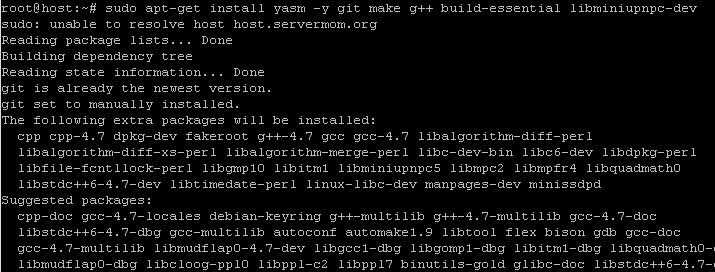
- USING SUDO APT UPGRADE COMMAND INSTALL
- USING SUDO APT UPGRADE COMMAND UPDATE
- USING SUDO APT UPGRADE COMMAND PATCH
- USING SUDO APT UPGRADE COMMAND DOWNLOAD
This will hang the script unless you provide input.Īlthough these prompts could be overridden with export DEBIAN_FRONTEND=noninteractive, responding to the prompts provides greater control. You may be prompted for input for things like GRUB updates, or which version of a file to keep.

It is recommended that you run this script interactively instead of calling it with another script or process. Output will be the normal output to std-out of running the apt-get update, upgrade, dist-upgrade, and autoremove commands.Ī video showing a sample run can be found at No option - Run all options (recommended)

Set it so it is executable using the command: You must have sudo permissions to run this script. You could, however, scavenge some useful features like using getopts to accept command line arguments for your other scripts! Prerequisites
USING SUDO APT UPGRADE COMMAND PATCH
If you maintain a large Ubuntu Server infrastructure, you likely have a patch management system, so this probably isn't for you.
USING SUDO APT UPGRADE COMMAND UPDATE
If, like me, you maintain several Ubuntu Linux systems, and you find yourself typing sudo apt update & sudo apt upgrade -y & sudo apt full-upgrade -y, this script is for you! The goal of this project is to provide an easy to use, single command to automate the tasks routinely undertaken to update an Ubuntu system, and to provide the messages that require further action or inquiry at the end of the run. This script puts clear banners at the beginning of each activity and parses output in an attempt to present items of interest like warnings or reboot messages at the end of the output. I made a script that did this, but thought it would also be fun to make it a bit more functional and make it available to everyone.Īlso, I noticed that when these commands are run together, the output can get quite lengthy, and there's no clear separation between the parts running, so I'd have to scroll back up through the output to see whether there was any output requiring action. I maintain several individual Ubuntu 16.04 Long Term Support (LTS) Servers and found myself typing sudo apt update & sudo apt upgrade -y & sudo apt full-upgrade -y often. Similar results can be obtained by simply running sudo apt update & sudo apt upgrade -y & sudo apt full-upgrade -y & sudo apt autoremove -y so this is as much an exercise in simple bash scripting concepts as anything. This project is in GitHub and can be found here Set the file to executable then run it with sudo as outlined below to update your Ubuntu system. In this quick write-up, you have learned about upgrading packages on Ubuntu via the command line.A bash script to update your Ubuntu system.

USING SUDO APT UPGRADE COMMAND INSTALL
sudo apt install unattended-upgrades -d Conclusion sudo apt install unattended-upgradesīut, if you want to run an interactive installation or upgrade use the (-d) display parameter. Use the unattended upgrade to silently install updates without user interaction on your Ubuntu system. These upgrades are highly recommended for the production system to keep them secure. But we still recommend you apply security updates to your systems. You may don’t like to update all the packages on your Ubuntu system. sudo apt dist-upgrade Apply Security Updates Only

It also removes obsolete packages from your system. Now, run the dist-upgrade which intelligently handles changing dependencies with new versions of packages. Then run the upgrade command to upgrade currently installed packages to the latest available versions from the configured sources.
USING SUDO APT UPGRADE COMMAND DOWNLOAD
Use the ‘ apt update‘ command to download the package information from all the configured sources from all repositories on your system. You can also apply only security updates silently via the command line. This tutorial will help you to update the latest packages on a Ubuntu system. You must keep the Ubuntu packages updated. All the Linux distributions provide security and package upgrades from time to time. It is recommended for all Linux system users to keep packages up to date.


 0 kommentar(er)
0 kommentar(er)
